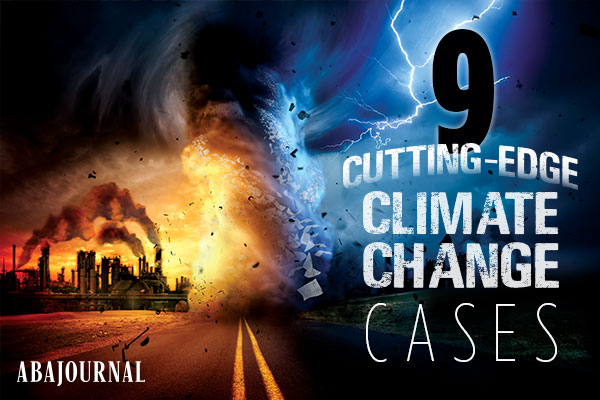Lawyers are unleashing a flurry of lawsuits to step up the fight against climate change

Photo illustration by Elmarie Jara/Shutterstock
The issue of climate change, which has been slowly winding its way through the legal system for the past two decades, recently took a high-profile detour. Traditionally relegated to the statutory realm of environmental and administrative law, a cadre of attorneys and legal scholars has given the issue a creative facelift that may change the legal landscape—and, they say, could determine the fate of humanity.
That may sound dramatic, but many in the environmental law bar and academia say it is justifiably so. Professor Ann Carlson, faculty co-director of the Emmett Institute on Climate Change and the Environment at UCLA School of Law, calls climate change “the existential crisis of the next 30 to 40 years.”
John Holdren, senior scientific adviser in President Barack Obama’s administration, told the Associated Press in 2009 that climate change is like being in a car with bad brakes heading toward a cliff in the fog.
University of Oregon law professor Mary Wood, a climate change law pioneer who created the legal theory that is driving today’s cutting-edge climate cases, takes the analogy even further. “Now we’re 10 more years down the road, and we have a driver with his foot down on the accelerator speeding toward that cliff as fast as he can in the fog—and we’re all in the back seat of that car,” she says. “The only question is: Do we want a police officer to pull the car over before it plunges off the cliff?”
See also: Oregon law professor plants seeds of change in climate change law
If one accepts the science around the dangers of climate change, the answer is obvious. But implementing it spurs a complex legal question: Who should wear the badge?
Delegating that role to the other two branches of government, the judiciary has dismissed numerous climate change cases as political questions. Michael Mayer, who is an adjunct professor of climate change law at Seattle University School of Law, says courts generally feel they shouldn’t interfere with the normal democratic processes.
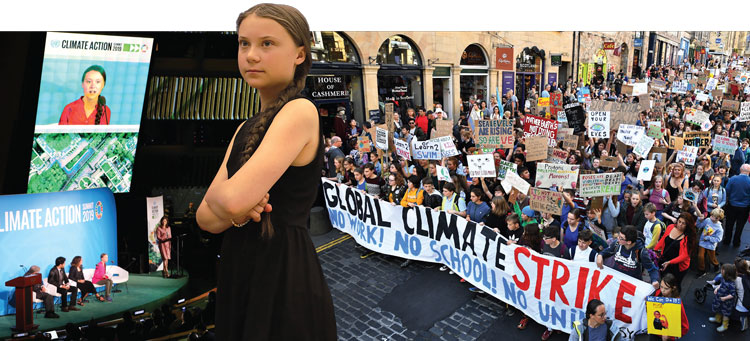
Greta Thunberg spoke at the United Nations Climate Action Summit in New York City in September. The U.N. visit came shortly after Thunberg and millions from more than 150 countries worldwide joined in a climate change demonstration Sept. 20. Demonstrators marched again Sept. 27. Photo by Spencer Platt/Getty Images; Micah Garen/Getty Images, Jeff J. Mitchell/Getty Images
“They tend to look at it this way: Even by not taking action, the other branches [of government] have made a decision.” But, Mayer notes, “Sometimes with certain issues, it is appropriate for courts to intercede. Look back to civil rights. The other branches were unwilling to act, but we were faced with an issue that cried out for major relief.”
Diverse segments of the population worldwide are seeking relief. Children in this country and abroad are suing their governments on constitutional grounds, arguing that climate change effectively denies them a safe future. Similarly, teenage Swedish activist Greta Thunberg spoke at the United Nations Climate Action Summit in New York City on Sept. 23, criticizing the U.N. and accusing five of the world’s major leaders of inaction; Thunberg joined 16 young activists from 12 countries to file a legal complaint with the U.N. Committee on the Rights of the Child. This U.N. visit came shortly after Thunberg and millions from more than 150 countries joined in climate change demonstrations Sept. 20; they marched again Sept. 27. Additionally, a coalition of women sued the government of Pakistan for discrimination, alleging that climate change has a disproportionate impact on women. Meanwhile, rampant wildfires, hurricanes and other extreme weather events are causing more frequent and catastrophic damages, making it increasingly difficult for courts to dodge the issue.
American judges now find themselves grappling with the newest brand of civil rights litigation. Today’s cases elevate climate change to the same shelf as Brown v. Board of Education, a comparison that has been expressly raised in recent pleadings. Attorney Philip Gregory, a principal in the Gregory Law Group in Redwood City, California, compares climate change efforts to civil rights. “The NAACP had to go after the system—segregation at the lunch counter, on the bus, in universities … That’s what the climate crisis is: an energy system problem largely controlled by the federal government.”
At issue is whether there is a fundamental right to a safe and stable environment, and if so, whether the government has a duty to preserve it. That debate looms large in the 2020 presidential election. Democratic contenders took questions from the public in climate crisis town halls on CNN and MSNBC in September (one Republican also appeared on MSNBC); all expressed support for climate protection measures.
There are more than a dozen major public nuisance climate change lawsuits pending in the United States. More than 1,300 climate cases have been brought in 29 nations around the world—more than 1,000 of them in the U.S. Some other nations have been receptive to the fundamental rights argument.
For example, in October 2018, the court in the Hague issued the first decision by any court in the world ordering a government to limit greenhouse gas emissions for nonstatutory reasons. An environmental group and 900 Dutch citizens sued to force the Dutch government to take steps to curb global climate change. Finding a governmental duty due to the “severity of the consequences of climate change,” the court invoked, among other principles, the Dutch constitution; the European Convention on Human Rights; the “no harm” principle of international law; the sustainability principle of the U.N. Framework Convention on Climate Change; and the prevention principle in the European Union climate policy. In opposing the government’s appeal to the Netherlands’ Supreme Court, which was pending as of the publication date of this article, the plaintiffs emphasized human rights principles.
Meanwhile, after Amazon wildfires broke out in August, a network of international criminal law and human rights attorneys called Stop Ecocide intensified their efforts to make “ecocide,” or willful destruction of the environment, a crime against humanity able to be prosecuted in the International Criminal Court in The Hague.
A groundbreaking case
So far in the U.S., however, a fundamental right to a safe climate has been a tough sell to the federal appellate courts.
“You’re arguing for us to break new ground,” 9th U.S. Circuit Court of Appeals Judge Andrew Hurwitz told Oregon attorney Julia Olson when she raised climatic fundamental rights under the Constitution’s equal protection and due process clauses at oral argument. Olson is lead counsel in Juliana v. United States, the most high-profile climate change litigation to date. The case has bounced back and forth between federal district and appellate courts since it was filed in 2015. Oral argument was held in June before the San Francisco-based 9th Circuit; a decision had not been announced at press time. Regardless of the outcome, legal experts expect the U.S. Supreme Court to revisit Juliana at some point in the litigation process.
Olson, who is founder of the nonprofit organization Our Children’s Trust, filed the complaint on behalf of 21 children from 10 states. Wood has referred to Juliana as “the biggest case on the planet.”
The youth plaintiffs allege a range of harms they suffered because of global warming, among them having to live in homes flooded with raw sewage and without water or electricity; decreasing numbers of wild fish for meals; and family economic loss when decreasing levels of snow caused the closure of the ski resort where a parent worked.
In addition to the constitutional claims, Olson reached back to the rarely invoked public trust doctrine, alleging that the government is a trustee of the environment, and as such, has a duty to preserve it. Wood provided a legal theory she created called “atmospheric trust litigation,” which is the driving force behind Juliana and other recent cases. The cases, all brought by children against their governments, seek court-supervised government plans to reduce carbon emissions. Atmospheric trust litigation is a game changer, Wood says, “because it does not leave this emergency solely to the political branches that caused the crisis in the first place.”
Playing to corporations that contribute to presidential campaigns, some administrations have put intense pressure on federal agencies to undermine or not enforce environmental laws.
Until atmospheric trust litigation sprouted, the legal vehicle of choice against government agencies and fossil fuel companies was the ancient tort of public nuisance, which led to a $206 billion global settlement with Big Tobacco in 1998. Recently, there has been an upswing in public nuisance cases against Big Oil filed jointly by dozens of state attorneys general against fossil fuel companies. In a case against the nation’s top opioid manufacturers, an Oklahoma judge ordered Johnson & Johnson to pay $572 million to the state. Some legal experts say the opioid case could be persuasive in climate change litigation, as liability rested on the company’s prior knowledge of the danger it was creating. Juliana and similar cases made the same claim.
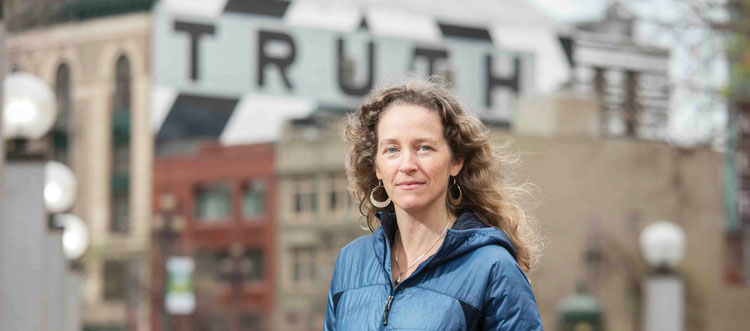
Julia Olson, founder of the nonprofit organization Our Children’s Trust, is lead counsel in Juliana v. United States, the most high-profile climate change litigation to date. Photo by UC Hastings.
In the Juliana case, Olson compiled 36,000 pages of evidence that indicate federal agencies have known for 50 years of the existence, causes and dangers of climate change. She says the government exacerbated the problem by subsidizing the fossil fuel industry (coal, oil and gas). The defendants have acknowledged that global warming exists but contend the government cannot be held legally responsible. Otherwise, they argued, it could cause a constitutional crisis.
A key point of agreement by both sides is that climate change is an extremely serious problem. “We do not question the science. Climate change threatens our environment and our ecosystems. It alters our climate systems, and it will only worsen over time. It is the result of man-made emissions,” stated Sean Duffy, a Justice Department lawyer, in pleadings in the Juliana case. The disagreement, he contended, is who gets to control the remedy. “Our position is that Congress and the executive branch should address climate change in the first instance and should do so by coordinating with other nations.”
Some, like Carlson, see the case as a “moonshot.” Others believe it will succeed and save humanity from extinction. Whatever the result, Juliana is going to be—and to a degree already is—a landmark case in climate change law.
The first indication of its impact came in 2016, when U.S. District Judge Ann Aiken from Oregon denied the government’s motion to dismiss and stated in a written opinion: “I have no doubt that the right to a climate system capable of sustaining human life is fundamental to a free and ordered society. … To hold otherwise would be to say that the Constitution affords no protection against a government’s knowing decision to poison the air its citizens breathe or the water its citizens drink.” She added, “Federal courts too often have been cautious and overly deferential in the arena of environmental law, and the world has suffered for it.”
Aiken’s assertion drew criticism in February from a federal judge in Pennsylvania who dismissed a Juliana-inspired case (Clean Air Council v. United States), in which child plaintiffs targeted rollbacks of environmental regulations by President Donald Trump’s administration. U.S. District Judge Paul Diamond characterized Aiken’s application of the public trust doctrine as an unfounded stretch of its traditional concept of governing navigable waters. “The 3rd Circuit has held that ‘there is no constitutional right to a pollution-free environment,’ ” Diamond wrote in his dismissal of Clean Air Council. He wrote that only the Juliana court “has recognized a substantive due process right analogous to what plaintiffs urge here. … Yet the Juliana court certainly contravened or ignored long-standing authority. … Moreover, the ‘right’ the Juliana court recognized is without apparent limit. Although the court stated that it wished to avoid the ‘consitutionalization of all environmental claims,’ it did not explain how it would do so.”
Mayer says climate change presents “a tough issue because it doesn’t fit neatly within a lot of our legal doctrines, nor within the statutes, nor in the common law. It’s an area of law that is largely unprecedented and is a global existential threat that swamps everything that has come before it. Courts are struggling, and lawyers are trying to provide a clear pathway, but the law is still evolving.”
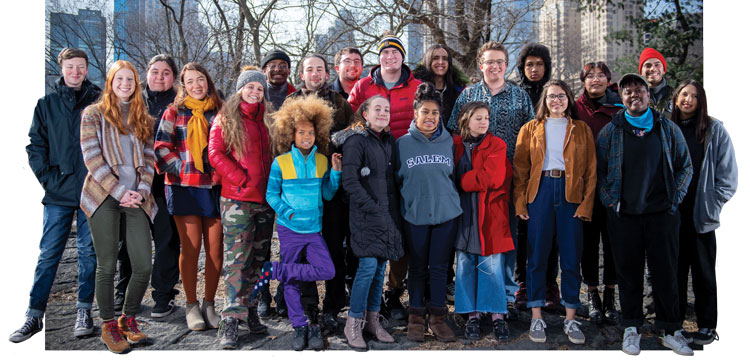
Our Children’s Trust filed Juliana v. United States on behalf of 21 children from 10 states (below) in what has been referred to as “the biggest case on the planet.” Photo by Robin Loznak.
Judge Hurwitz in the 9th Circuit labored over whether the Juliana plaintiffs had stated a justiciable claim but also made a leap, saying the federal government may have committed criminal negligence by failing to address climate change.
“That’s a strong statement,” says Carlson, who was interviewed on 60 Minutes earlier in 2019 about climate change litigation. She said a victory for the Juliana plaintiffs would be “enormous” because of the effects it would have on the fossil fuel industry.
That nuance has not been lost on the Trump administration (which did not respond to requests for an interview for this article), the U.S. Environmental Protection Agency (which declined to be interviewed), or any of the seven other federal agencies named as defendants in Juliana. The government has relentlessly opposed the case, repeatedly appealing rulings to the 9th Circuit and the U.S. Supreme Court.
Before Aiken rendered her opinion, the U.S. judicial system had never recognized a constitutional right to a safe climate. The Supreme Court recently gave “a pretty telling signal,” says University of Houston Law School climate change law professor Tracy Hester, chair of the Climate Change, Sustainable Development, and Ecosystems Committee of the ABA Section on Energy, Environment and Resources.
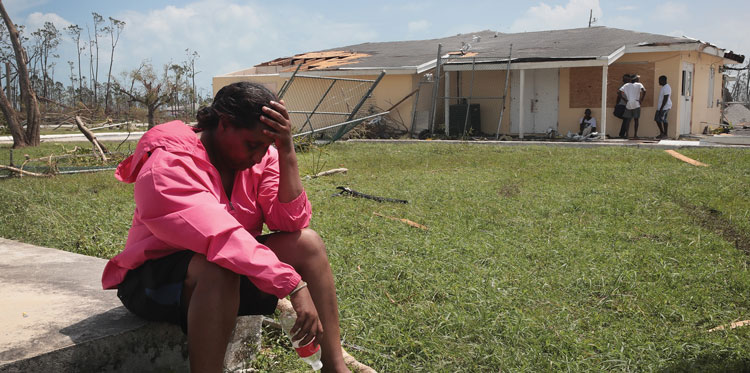
People wait for relief supplies in the Bahamas in September after Hurricane Dorian. “Climate justice seeks to combine the climate change discussion with human rights that is equitable for the most climate-vulnerable groups,” says a report accompanying an ABA resolution on climate change. Photo by Scott Olson/Getty Images.
Hester says the high court “effectively directed the government” to consider taking the Aiken ruling on interlocutory appeal to the 9th Circuit, which it did. He characterizes that as an “incredibly unusual” move for the Supreme Court and considers it a sign that the high court “is likely to have a heightened level of interest” in climate change cases that come before it for review.
Climate change plaintiffs attorneys see the issue as a systemic problem. “The idea was not to try to save one polar bear at a time or shut down one power plant, but to go after the whole system,” says Gregory, who is co-lead counsel on Juliana. His work on the case is pro bono, and he says he devoted more than 2,000 hours to it in 2018. That burdens the rest of his practice, but he says he’s committed to doing it because he considers Juliana “the most important case of our time.”
Climate change and legal practice
In August, the ABA House of Delegates overwhelmingly passed a resolution on climate change from the Section on Environment, Energy and Resources. It urges lawyers to give pro bono assistance to climate change efforts; Congress to enact climate change legislation; and the United States government to ratify and remain in treaties to reduce greenhouse gas emissions. It also calls upon local and state governments, as well as the private sector, to act.
In the report accompanying the resolution, Amy Edwards, then chair of the section, underscored the risks that climate change presents to current and future generations. She noted that in addition to the obvious environmental risks, climate change presents security, economic and social risks that adversely impact human rights worldwide.
“Extreme weather events, their causes and consequences, raise questions of justice and human rights,” the report states, because climate change “disproportionately strikes those who have contributed least to it” and who are “least well-placed” to respond. “Climate justice seeks to combine the climate change discussion with human rights that is equitable for the most climate-vulnerable groups.” As an example, the report projects that as temperatures rise in extremely hot regions during the hottest time of year, it may be impossible to survive without air conditioning.
These inequities have generated an increasing need for legal advocacy, and climate change has become a recognized practice area. In large U.S. firms, it is usually a subsection of the environmental law practice. Columbia Law School professor Michael Gerrard launched the Renewable Energy Legal Defense Initiative, which is a brain trust and a litigation resource, in January 2019 in conjunction with Arnold & Porter, where he was a partner and is senior counsel. In 2009, Gerrard founded and is faculty director of the Sabin Center for Climate Change Law at Columbia, which maintains an up-to-date public database that tracks all climate change case law worldwide.
Arnold & Porter is a driving force in the Renewable Energy Legal Defense Initiative and a founding member of the multi-firm group Lawyers for a Sustainable Economy, a collective that offers pro bono legal assistance to entrepreneurs and nonprofits addressing sustainability challenges. In 2018, Arnold & Porter made a commitment of $2 million in pro bono assistance and is one of 13 firms that made either a $2 million or $500,000 pro bono commitment to the group.
“We’re really excited,” says partner Brian Israel, chair of Arnold & Porter’s environmental practice group. “It’s been hugely successful in a very short amount of time. It hasn’t even been a year, and we’ve already exceeded our two-year commitment, so we’re going to keep growing it.” He says there has been “a tremendous response” from the firm’s attorneys in a wide range of practice areas.
The firm filed a complaint pro bono on behalf of the National Parks Conservation Association against the U.S. Department of the Interior over damages to national parks during the government shutdown in 2018.
It has also taken cases on the opposite side of the climate change issue. The firm represented BP in two public nuisance cases in recent years.
Arnold & Porter is donating 50% of environmental associate Laura Cottingham’s hours to pro bono work for the Renewable Energy Legal Defense Initiative.
Cottingham is working on a case Arnold & Porter filed on behalf of Friends of Flint Mine Solar against the town of Coxsackie, New York. Friends of Flint Mine Solar was formed by farmers who want to lease or sell their properties to a solar power developer that reportedly could have produced renewable power for more than 20,000 homes. Local ordinances, however, prohibit the farmers from doing so and have the support of community members who expressed fears that visible solar panels may lower their property values.
Working at the grassroots level with local ordinance issues is a good way for attorneys to step into pro bono climate efforts, Gerrard says. It is among the suggested methods in the legal toolkit for climate change law attorneys detailed in his 2019 book, Legal Pathways to Deep Decarbonization in the United States. The book, a collaboration among nearly 60 attorneys, is highlighted in the report accompanying the ABA’s 2019 resolution on climate change. It provides more than 1,000 legal strategies for climate change litigation. Attorneys from more than 20 firms who wrote chapters are working on draft legislation on climate change. All work by the authors and editors of the book, which was published by the Environmental Law Institute, was volunteer.
Legal opportunities
Climate change law is broader than it sounds, encompassing other legal areas. That creates opportunities, Carlson says. “It’s hard to think of an area of law that’s not affected in some way in regard to climate change,” she says. “What we eat, how and where we grow our food, how much we consume materially, how big our houses are—these are all relevant to controlling greenhouse gases. Even how we make cement matters.”
Several U.S. counties and cities and one state (Rhode Island) have filed suits against fossil fuel companies alleging that they worsen climate change, Gerrard says. Other states, particularly those in which fossil fuels play a major economic role, are crying foul. West Virginia’s attorney general, Patrick Morrisey, issued a blistering statement in August after his counterparts in more than 20 states jointly sued the Trump administration for its decision to roll back restrictions on coal-fired plants. He called them “dead wrong” and vowed to fight what he called a “22-state big government ‘power grab’ lawsuit.”
Gerrard predicts expanded applications of climate change litigation. For example, he says, there could be cases against architects, engineers and companies that construct buildings that don’t withstand foreseeable weather events. “You can end up with burst oil tanks, collapsed bridges, washed-away roads,” he says. “A lot of litigation will result as shorelines become uninhabitable. There could be takings claims. Will people who have to flee endangered areas be compensated for their moves? What happens to banks holding those mortgages?”
While most climate change advocates are plaintiffs, some find themselves defendants. The latter happens most often in civil disobedience cases brought against protesters who demonstrate or take overt action against what they consider a serious environmental threat, such as a proposed oil pipeline. Their legal weapon of choice is the “necessity defense,” which goes back centuries and excuses unlawful acts proven necessary to avoid or minimize greater harm.
Necessity wasn’t successfully raised in a U.S. climate change prosecution until 2018, when a judge acquitted 13 protesters who had physically interfered with the construction of a pipeline to transport fracked gas through a Boston neighborhood. In April, a Washington state appellate court reversed the burglary and criminal sabotage convictions of a man for trying to physically shut off a pipeline that transported Canadian tar sands oil to the United States. The court held that by barring him from raising a necessity defense, the trial court had violated his constitutional rights.
Looking ahead to remedies and solutions for applying constitutional rights in climate change litigation, Wood is already at work on what she sees as the next frontier: a theory she created called atmospheric recovery litigation, a distinct legal concept from atmospheric trust litigation. It is designed to force fossil fuel companies to pay for the damages they cause. She says it is still in the theory-and-outreach stage. “No litigator has raised this as a remedy in a case yet, but I expect it will happen when the right case comes along.”
Meanwhile, many committed to remedying climate change have circled Nov. 4, 2020, on their calendars. Under the Paris Agreement, which Trump has announced an intention to withdraw from, that is the earliest date the United States can officially withdraw. It is also one day after the next presidential election.
This article ran in the Winter 2019-2020 issue of the ABA Journal with the headline “The Coming Storm: Lawyers are unleashing a flurry of lawsuits to step up the fight against climate change.”
Update: In January 2020, the San-Francisco 9th U.S. Circuit Court of Appeals dismissed Juliana v. United States. In an interview with the New York Times, Julia Olson said she would appeal the ruling.
Darlene Ricker, a legal affairs writer and book editor based in Lexington, Kentucky, is a former staff writer and editor for the Boston Globe and the Los Angeles Times.

